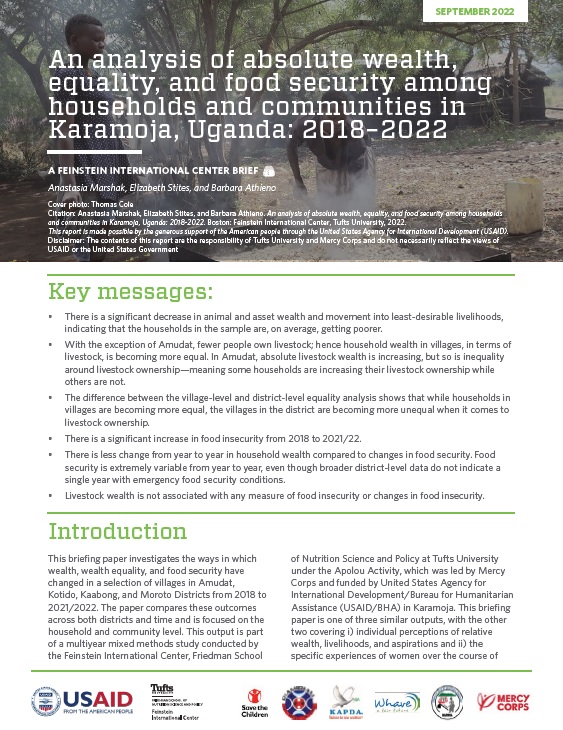This brief investigates how wealth, wealth equality, and food security have changed in specific villages in Amudat, Kotido, Kaabong, and Moroto Districts in the Karamoja sub-region of Uganda from 2018 to 2021/22.
The study found that since 2018 households and villages in the sample are, on average, getting poorer, and villages more unequal. Across the districts, animal and asset wealth decreased, except for in Amudat. However, with fewer people owning livestock, household wealth also became more equal in all districts except Amudat. This growing equality, spurred by increased poverty, is specifically within villages. In contrast, villages in the district are becoming more unequal from one another in terms of livestock ownership. However, qualitative data – discussed in the accompanying full report—indicate that equality may in fact be improving when examined over a longer time period.
At the household level, the quantitative findings also show poverty increasing over the course of the study. This is evidenced by movement into less-desirable livelihood activities over time. For example, every round of data collection was associated with 78% greater odds that a household reported brewing alcohol, an activity associated with poverty.
Food insecurity increased from 2018 to 2021/22 and was highly volatile. In Amudat, Kaabong, and Kotido, food insecurity significantly increased by an average of about half a month across each of the three data collection periods. However, in Moroto, there was no significant change over time. Food security was extremely variable year to year. Changes in cereal-related harvests and possibly also the terms of trade of livestock during the harvest season appear to drive such changes. However, wealth as measured via livestock was not associated with any measure of food insecurity or changes in food insecurity.
The findings are based on the quantitative component of four years of mixed-methods research under the Apolou Activity, in partnership with Mercy Corps and funded by USAID/BHA. We used a randomized cluster sample across 52 villages (10 households per village) in the four districts in three time periods (October/November 2018, October/November 2019, and October 2021–January 2022), resulting in a sample size of 520 households, plus a margin for attrition.







